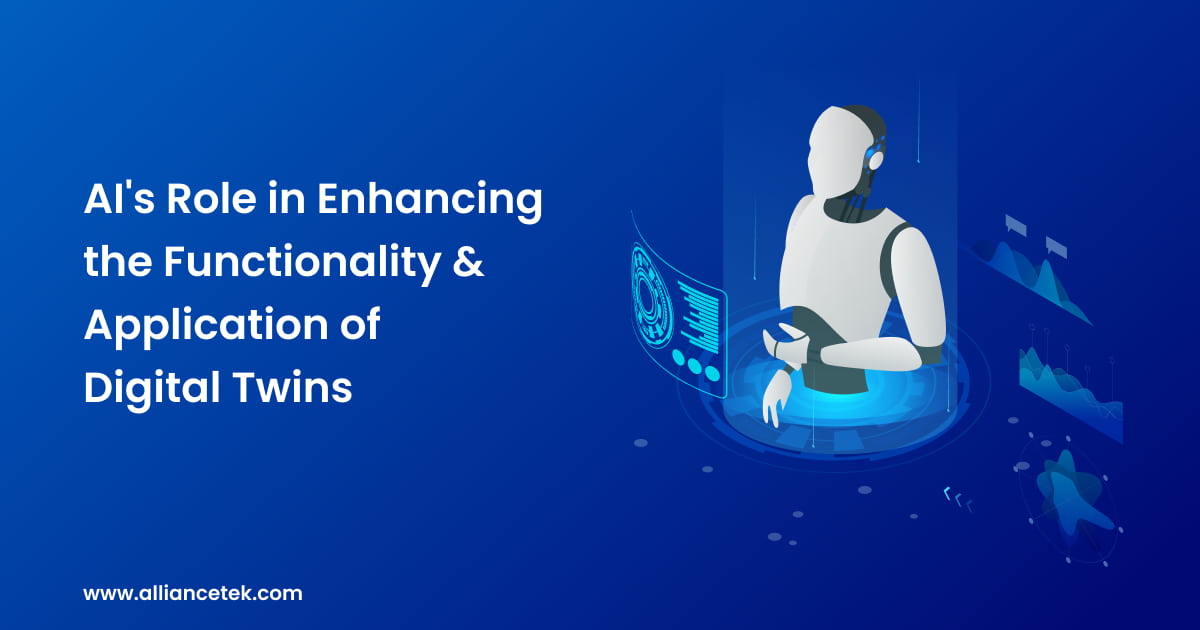Digital twins and AI are emerging technologies that are revolutionizing several sectors through real-time modeling, control, and improvement. Digital twins are a digital representation of the actual object and are used in the analysis and prediction of maintenance schedules.
These digital twins become more proactive, self-learners when they incorporate AI, and increase their applicability in various industries. This post aims to identify the potential and real uses of the combination of AI and digital twins.
The Concept of Digital Twins
Digital twins are virtual models that mirror the characteristics and functioning of real-life objects based on the data obtained from sensors, previous information, and current inputs. This enables one to simulate the performance, forecast the results, and control the operations efficiently.
Digital twins are most useful for big and intricate projects like buildings, jet engines, and power stations. The increasing popularity of the digital twin market, especially due to the digital transformation and IoT technologies, demonstrates their increasing relevance.
3 Major Types of Digital Twins
There are mainly three kinds of digital twins:
Product Twins
These are electronic duplicates of the actual products that are employed to mimic real-life conditions, assess possible problems, and enhance the quality of the product.
Process Twins
Also referred to as Digital Twins of an Organization (DTO), these assist in the creation of business processes as well as enhancing and optimizing them.
System Twins
These virtual models of entire systems collect information from system components to monitor and control the systems and their performance.
Advantages of Digital Twins
Digital twins offer numerous benefits, including:
Enhanced Research and Development
Digital twins help in the proper research and designing of products as they provide a large amount of data relating to future performance. This data enables firms to make improvements on products before they are put on the market.
Increased Efficiency
Once a new product is launched into the production process, digital twins can replicate and analyze production systems to optimize and sustain maximum performance during the entire manufacturing process.
Optimized End-of-Life Processing
Digital twins help manufacturers determine how to deal with products that have become obsolete or have come to the end of their useful life. It will also help in determining which of the products can be recycled or which can be taken through another final process of disposal through digital twins analysis.
Role of AI in Enhancing Digital Twins
AI enhances digital twins in several critical ways:
Data Integration and Analysis
The AI algorithms, using the digital twins’ data, provide pattern recognition and insights that may not be easily discernible to the human eye. AI-based tools can efficiently break down and manage large amounts of data, as well as enable real-time analysis and decision-making.
Predictive Maintenance
The models enable the identification of equipment that is likely to fail shortly thus minimizing on time taken to repair and the associated costs. Thus, based on historical and current data, AI predicts possible failures and identifies opportunities for preventive actions.
Optimization
Due to the constant use of operational data, AI learns how to enhance the processes and make them more effective and efficient. This includes creating better production planning and control of energy consumption on the production floor in real time.
Decision Support
Thus, AI offers recommendations and decisions that help to manage the organization at the strategic and operational levels. In different situations, it is possible to choose the right strategy with the help of AI as it shows different possibilities.
Use Cases of AI with Digital Twins
Digital twins have a lot of use cases with AI, such as:
Predictive Maintenance in Aerospace
The application of digital twins in the aerospace industry with the help of AI is to check the health of aircraft, to predict the failure of components, and to schedule maintenance and this has led to enhanced safety and decreased costs. Digital twins mimic the behavior of aircraft parts in real-life situations and help in identifying the parts that require repairs before they fail.
Smart Cities
They use digital twins to model how new infrastructure will affect the city, manage traffic, and improve disaster management. This is because, through the simulation of the actual physical environment, planners can come up with various strategies and plans to enhance city planning and management.
Integrating AI with Digital Twins: Challenges and Future Directions
Despite the promising potential, integrating AI with digital twins presents several challenges:
Data Security and Privacy
Thus, the security and privacy of the data used in digital twins are critical. Since digital twins are created with the help of large data sets, protecting this information from cyber threats and hacking is crucial.
Interoperability
Data formatting and communication interfaces for interoperability between the different systems have not been well defined. Digital twins are only as good as the systems and devices that are used to support them and therefore effective communication between them is crucial.
Scalability
Thus, it is crucial to create AI models that can work at the level of digital twins and process massive amounts of data. Hence when the volume of data generated by digital twins is vast, the AI models that are applied in the system must be able to handle this data.
Therefore, it is recommended that future work should aim to address these issues, refine the AI methodologies, and identify new applications of digital twins for various industries, such as self-driving cars, and smart farming. AI and data analytics technologies are expected to be the key factors that will shape the future of digital twins and enhance the complexity of simulations and decision-making.
Conclusion
AI integrated with digital twins has the potential to impact many industries positively. With the help of AI-driven digital twins, data integration, predictive maintenance, process optimization, and decision support are the keys to smarter, more efficient, and more resilient systems. It is evident that, with the advancement in technology, the integration between AI and digital twins will create more possibilities, hence fostering development.
